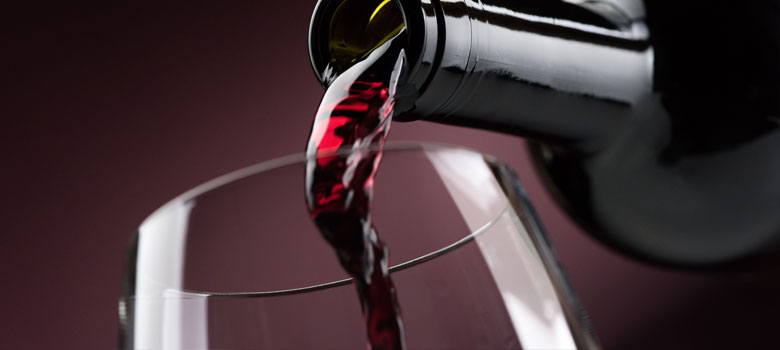
Wine
Pucker up, it’s tannin time
Tannins might seem like a dry topic to some, especially when we could be talking about bold new varieties and winery innovations. And they’d be right! Tannins are dry. Very, very dry. Which is why we absolutely love them. If you don’t know a whole lot about tannins, basically they are the molecules that, when consumed, give your mouth a dry sensation, but there is so much more juicy info to learn about tannins, so let’s get to it.
First-up, what exactly is a tannin?
.jpg?lang=en-AU)
The scientific definition of a tannin is that it is a phenolic compound found in bark, leaves and immature fruit of a wide range of plants. Yes, it’s not unique to our beloved grapes. A strong black tea is laden with tannins, as is coffee, dark chocolate, beer, and even fruits such as unripe banana. Tannins in wines are usually achieved through the time juice is left on skins, the presence of grapevine stems and seeds throughout winemaking, as well as the oak used in the aging process.
What do tannins taste like?
.jpg?lang=en-AU)
Tannins have no ‘taste’ as such. They cause more of a tactile sensation and relate to the term astringency. Large quantities of strong flavonoid tannins, found predominately in the likes of red wines, are the cheeky little compounds that will make you feel the need to pucker your mouth, or give you the sensation of a powdery, dry tongue. This is similar to that of acidity, more typical of white wine, which also falls under the astringency banner.
Why do we want tannins in our wines?
.jpg?lang=en-AU)
All this talk of puckering and powdery tongues isn’t painting tannins in the positive light in which they deserve to be talked about. Tannins are actually one of the most important elements to consider when crafting a red wine. Structure, flavour persistence and texture are all sought-after qualities in a premium wine and they are largely thanks to the presence of tannins. Plus, tannins are a vital tool used to protect a wine from oxidation during the maturation process and enable red wines to age with grace.
Do all varieties have the same quantity of tannins?
.jpg?lang=en-AU)
Just as each grape variety has its own unique aromas and flavour profiles, the amount of tannins present is also unique to each variety, including white grapes. All grapes used in making wine contain some tannins. The reason white wines have less tannins than their red wine counterparts is largely due to the individual grape profile, but is also due to the winemaking process. Red wines are generally made using greater contact on skins, as well as maturation in oak barrels. These two processes impart more tannins into the wine, which, as we already discussed, can add to the texture, palate length, and the aging potential.
Which varieties are high and low in tannins?
.jpg?lang=en-AU)
Cabernet Sauvignon, Sangiovese and Nebbiolo are some of the red varieties that are naturally higher in tannins. A white wine high in tannins is the little known Verduzzo grape, native to Italy. Red varieties that are somewhere in the middle of the tannin scale include Shiraz, Tempranillo and Merlot. Some people can even be intolerant to tannins, which means they may get a severe headache or stomach ache – not to be confused with over-indulgence! If this sounds like you, try opting for wines down the lower end of the tannin scale, such as Pinot Noir, Granache, Barbera, and Gamay.
Why do tannins love red meat?
.jpg?lang=en-AU)
When pairing red wine with food, red meat is often the perfect companion, which has a lot to do with the way tannins work – tannins love protein. Essentially it works like this, when you sip your favourite glass of tannin-rich red wine, the tannins actually coat your tongue. Then if you place a mouthful of perfectly seared steak in your mouth, the fat in the meat reacts with the tannins, softening or reducing the drying, puckering sensation. Now that the tannins have been softened by the fat, reducing the astringency in the wine, the wine’s subtle fruit flavours are revealed.
So, get on board the tannin train
Now that you know all about tannins and how wonderful they are, why don’t you do your own tannin tasting at home? Simply select some lighter red wine styles, then high-tannin wines, such as Cabernet Sauvignon, buy yourself a good quality steak, and let the magic of tannins unfold.
If you want to learn more about wine, check out our dedicated 'Wine 101' section!